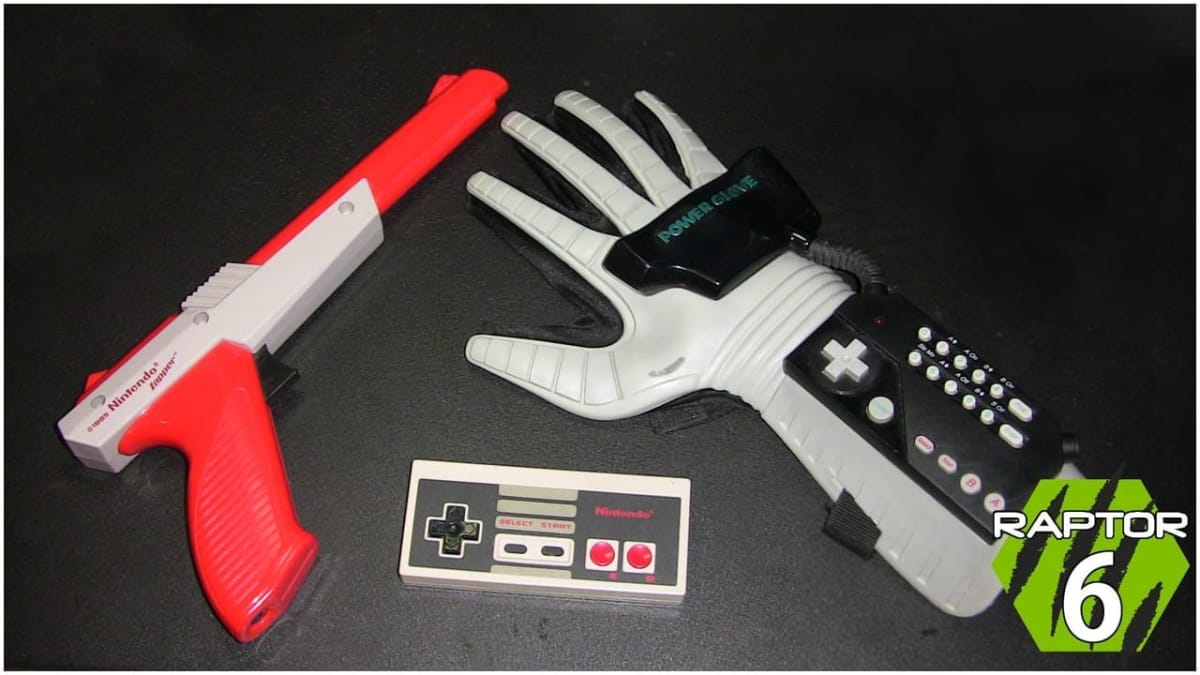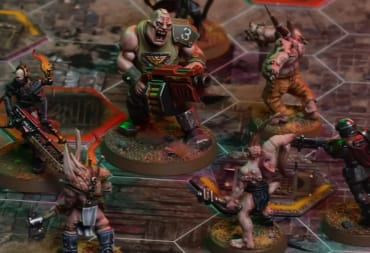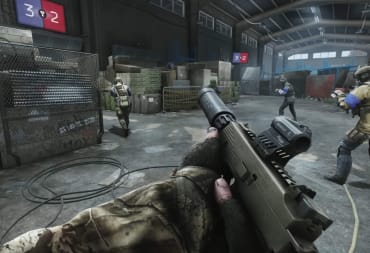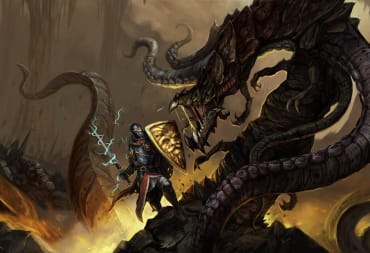Over the years, Nintendo has always pushed the boundaries of innovation by creating new ways for players to interact with its games. While some ideas have resulted in success, like the design of the Nintendo 64 controller, others have resulted in a great theory turning in to an overambitious impracticality. There have also been some ideas that are just straight up weird, and it’s the weird that we’re focusing in this particular Raptor 6. Here are six of the strangest peripheral ideas and concepts that Nintendo have come up with.
6 - ASCII Stick L5
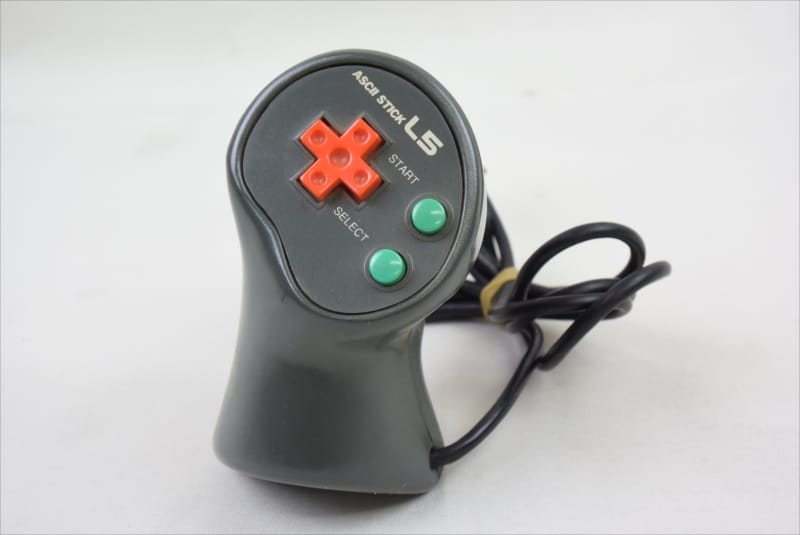
The ASCII Stick L5 was a one-handed controller with the purpose of aiding RPG players. How you ask? The theory Nintendo had was that RPG players are constantly reading maps, taking notes and making a manual inventory list. Of course, they were wrong. Not only in that hardly anyone in the 1980s was that fanatical about gaming, but wrong in that doing those sorts of activities with one hand requires ninja-like skill.
Like most of the things you’ll see on this list, the idea behind this controller is pretty sound. Fitting in one hand and being relatively small, the button placement (with A and B being on the back of the controller to be pressed with the index and middle fingers) proved too fiddly and just wasn’t practical, although it was adapted for a number of Nintendo’s home consoles, each version being slightly redesigned as opposed to just being fitted with a different adapter (although this is also an option).
The ASCII Stick L5 saw limited release in Japan and is deemed quite the collector’s item. So if you’d like to play Zelda using just your left hand, try and hunt down one of these elusive controllers (after seeking psychiatric advice).
5 - R.O.B the Family Robot
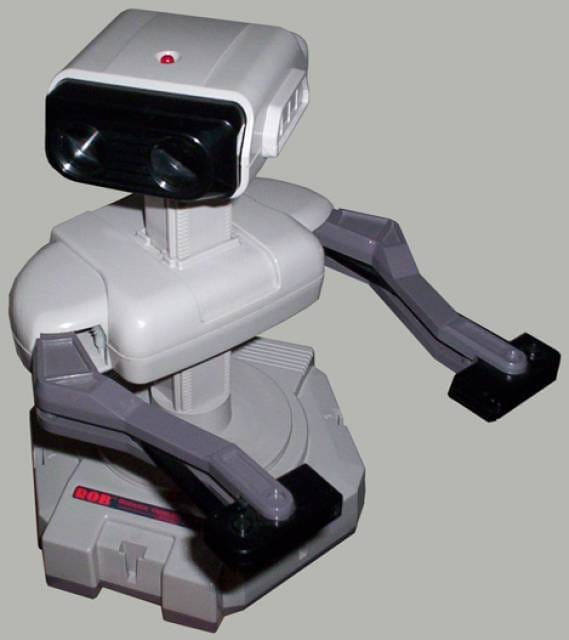
Before he was the custodian of The Great Fox in the Starfox series, R.O.B, or Robotic Operating Buddy, began his life as a companion for the NES.
Being released in 1985, R.O.B was part of a package deal to quell retailers’ fears of selling a computer following the video game crash of ’83 and present a more family and toy based image. Sadly, Nintendo’s Robot Series only gave the little guy two games to be a part of, Gyromite and Stack-Up, both of which were fun games in their own right and made functional use of the Johnny 5 look-a-like. However, support for R.O.B just wasn’t sustained and the set up that required R.O.B to function for each game was slightly laborious, something that North American children simply didn’t want to do every time they wanted to play with the artificial friend.
For those that don’t know, R.O.B lives on in the Super Smash Brothers series as one of the playable characters.
4 - Roll and Rocker
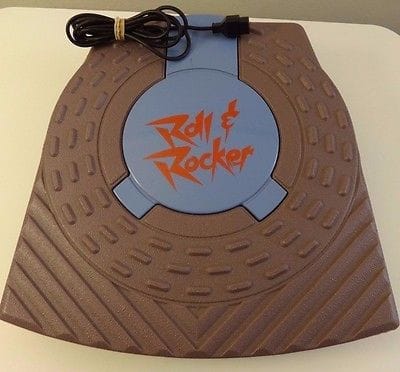
Before Dance Dance Revolution came along with its Euro and Mega mixes, Nintendo were pioneering foot based control schemes with the slightly crookedly named Roll and Rocker.
The Roll and Rocker was a plastic matt that the player would stand on and use their own body movements to act as the directional buttons. You want to move forward? Simply lean forward. Swing your hips to the left to send your character off in that direction. It was a novel idea and was actually compatible with a wide variety of NES games as it also featured a controller port on the side that could be plugged in so you could play as you sway. Sadly, this was also part of its downfall.
As much as Nintendo may have thought the Roll and Rocker would immerse people more in their games and get them a bit of “exercise” while playing, having the ability to plug a controller that has its own D-pad immediately makes the piece of plastic you’re standing on redundant. Weight was also a reported issue with the device, with most people stating that average human body weights being much higher than what the peripheral was able to function with.
3 - LaserScope
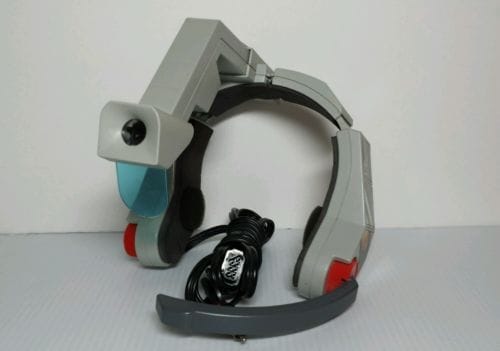
The Konami produced LaserScope was a voice-powered, cranium mounted controller that functioned like a light gun. Originally known in Japan as the Gun Sight for the Famicom, the player would shout “FIRE!” into the microphone and the LaserScope would indeed scope its lasers at the screen.
Now, voice recognition technology can be a bit shaky even in this era of technology. The number of times I’ve asked Siri to set an alarm for the morning and she’s opened me a new email account isn’t funny, so you can probably imagine the pitfalls that this peripheral faced. Admittedly, shouting the word “FIRE!” into the mic did work, but so did the word “CHEESE” or “MAGOOBER." Anything could set the LaserScope off, including background noise in the room you’re in or game sounds from the TV, so the game would begin firing like crazy if the peripheral picked up any noise whatsoever.
Initially only designed for a game called Laser Invasion, the LaserScope was actually compatible with all games that supported the NES Zapper, so you had some options of what to play it with. Unfortunately, the crude sound-based tech was so primitive at the time of manufacture it never really stood chance.
2 - U-Force
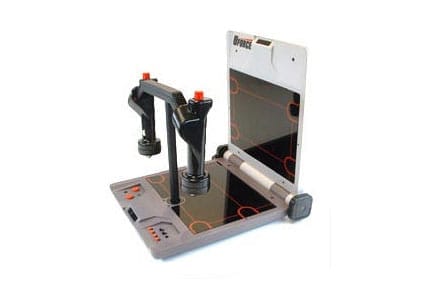
As much as it might look like a huge Gameboy Advance SP, the U-Force is actually an infrared sensor-based controller that translates specific body movements in to game commands. It consisted of two “screens” that would pick up the movements of your arms and hands.
This ambitious peripheral was created by Broderbund in an attempt to get involved in the home console market, but sadly it failed for a number of reasons. The main culprit being that it simply didn’t work. The idea was that players would be able to navigate characters or objects around by moving their arms and hands in the desired direction. If you wanted your character to walk to the right, you’d wave your hand to the right and the U-Force would respond. Sometimes.
The bulk of the problems came with detecting movement and translating those movements properly. The very limited amount of time the U-Force did work, it generally did the wrong thing or not enough of the thing you wanted it to do. Most of the time though, the technology within the device simply wasn’t advanced enough to be do what it needed to do.
1 - Super Chair
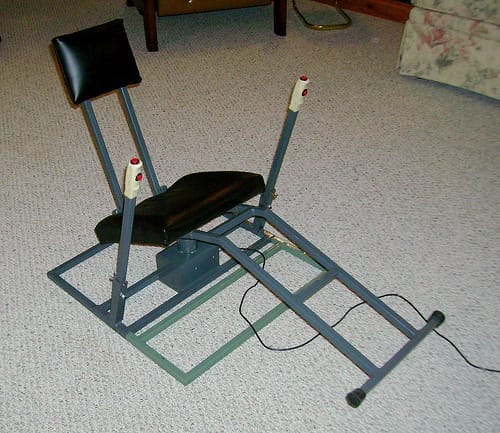
From what scarce information there is on this elusive peripheral, the Super Chair resembles an altered exercise chair with buttons mounted on attached handles.
This contraption was actually unreleased but was intended to let your body control movement, kind of like the aforementioned Roll and Rocker but taking it one step further. Functioning best in driving and flying games, the handles that are attached to the base of the chair have the NES standard A, B, Start and Select buttons, and it even has turbo controller capabilities so you can rapid fire without the fear of getting that intense Track & Field finger cramp.
As this product never made it to market, I guess it can’t technically be seen as a failure, but by the same token, it not making it to mass production is an indication that even the eccentric minds of Nintendo didn’t believe it would be a profitable venture.
So that’s our 6 strangest Nintendo peripherals. Are there any you know of that we didn’t mention? Pining for the Power Glove? Sad to not see the Super Scope? Let us know in the comments.
Have a tip, or want to point out something we missed? Leave a Comment or e-mail us at tips@techraptor.net
